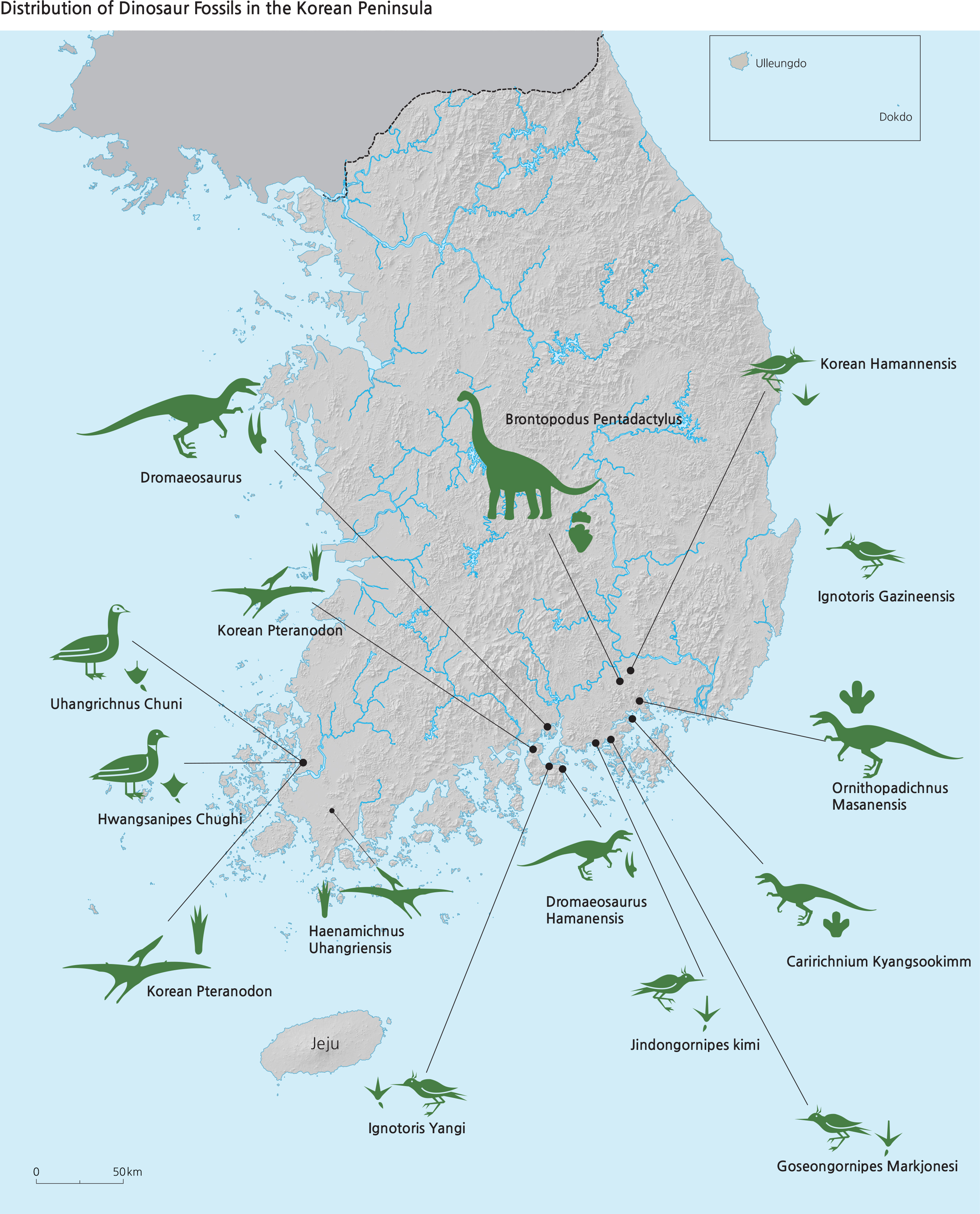The Cretaceous terrestrial (non-marine) sedimentary layers on the Korean Peninsula contain abundant dinosaur fossils, including footprints and egg and bone fossils. In 1972, the first dinosaur fossil found in the Korean Peninsula was an egg fossil from the seaside of Hadong-gun in Gyeongsangnam-do. After that, in 1982, a dinosaur bone was found in Euiseong-gun in Gyeongsangbukdo. Since 1996, many dinosaur footprints and egg and bone fossils have been found in Cretaceous sedimentary layers in Jeollanamdo and Gyeongsangnam-do.
Dinosaur footprint fossil sites are found in the 27 Cretaceous terrestrial sedimentary layers in the southern region of the Korean Peninsula; the Cretaceous
terrestrial sedimentary layers in Haenamgun, Hwasun-gun, and Yeosu-si within Jeollanam-do, and Goseong-gun within Gyeongsangnam-do, are representative sites.
Ornithopod (bipedal, herbivorous dinosaur) footprints are very abundant in the Korean Peninsula, and representative theropod (bipedal, lizard-hip dinosaur) footprints have been found in Hwasun-gun within the Neungju Basin. Abundant sauropod (fourlegged, herbivorous dinosaur) footprints are reported from the Jindong sedimentary layer in the southeastern region of the Korean Peninsula and the diverse size, shape, and trackway of sauropod footprints indicate that diverse sauropods lived in the Korean Peninsula. The pterosaur, a flying dinosaur, found in Uhangri, Hanam-gun was internationally approved as a new species named Haenamichnus uhangriensis.
The largest number and the widest trackway of pterosaur footprints (443 and 7.3 m, respectively), are found in the Uhangri area. In this area the footprints of pterosaurs, dinosaurs, and birds occur together in the same sedimentary layer, which is very rare in the world. For the first time in Korea dinosaur bone fossils which are well preserved enough to identify the species of dinosaurs, were found in the sedimentary layer in Hadong-gun, Gyeongsangnam-do; the bone fossil was identified as a new species and named as Pukungosaurus millenniumi. It was registered as the 931st dinosaur genus in the world inventory of dinosaurs.
During the Cretaceous many lakes that could be used as a source of drinking water for dinosaur, existed in the southern region of the Korean Peninsula. Around the lakes, gymnosperms, including conifers and ferns, were abundant, providing enough food to dinosaurs. Vertebrates including tortoises, crocodiles, early mammals and fish and invertebrates including mollusks, arthropods and lugworms were also abundant in and around lakes. These lake environments made the Korean Peninsula a good habitat for dinosaurs during the Cretaceous. As a result, dinosaurs thrived on the Korean Peninsula during the late Cretaceous when
dinosaurs were on the decline in other parts of the world. The Korean Peninsula was one of the last sanctuaries for dinosaurs in the world.

